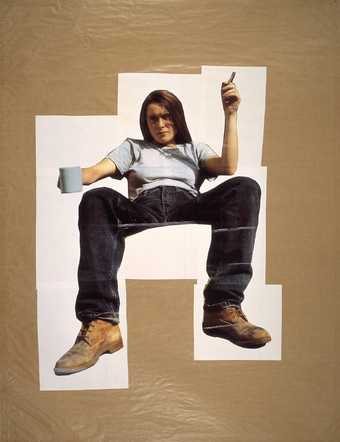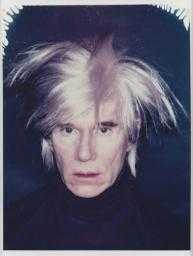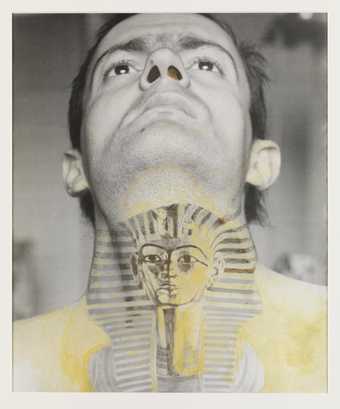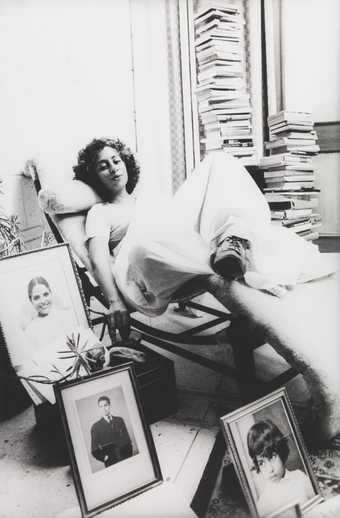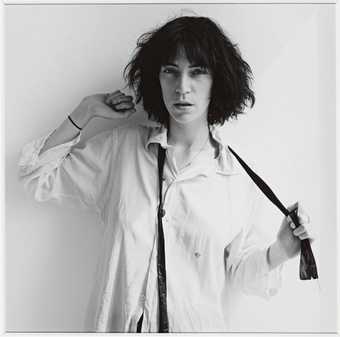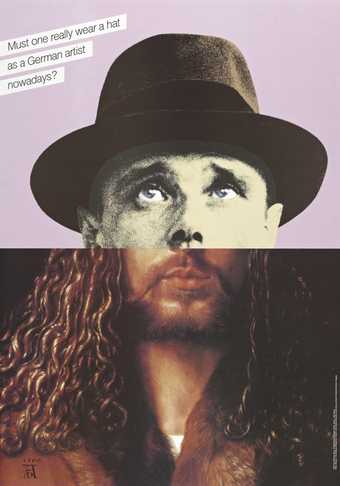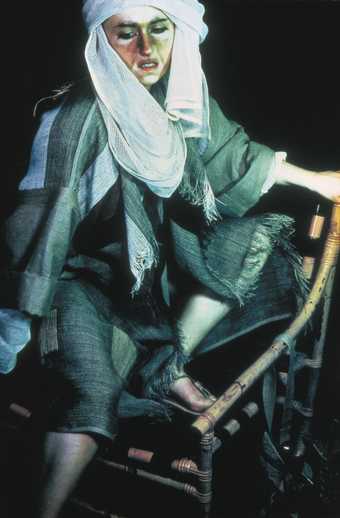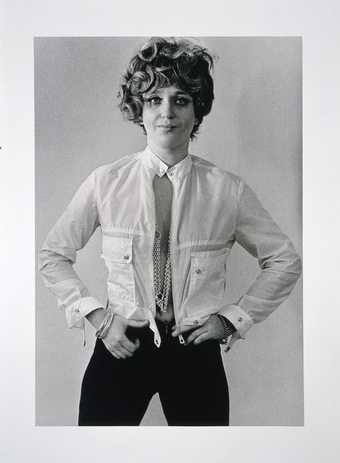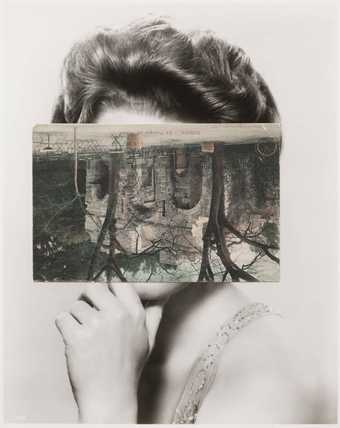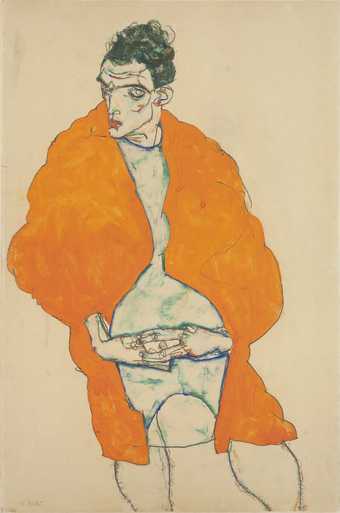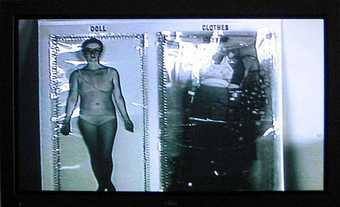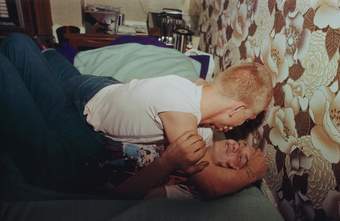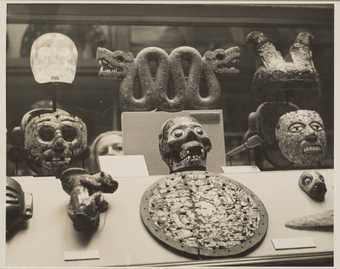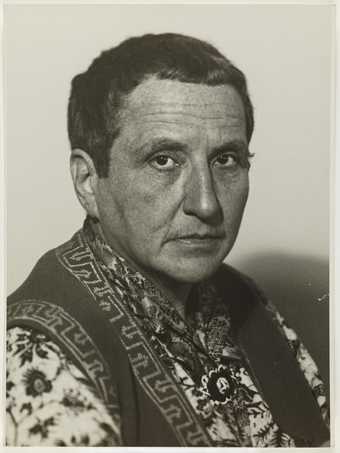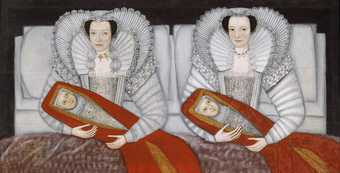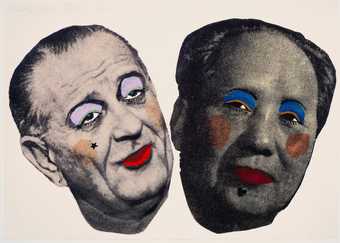
Francesca Woodman
Space², Providence, Rhode Island
(1976)
ARTIST ROOMS Tate and National Galleries of Scotland
© Woodman Family Foundation / Artist’s Rights Society (ARS), New York and DACS, London
Introduction
Francesca Woodman is best known for photographing herself. But her pictures are not self-portraits in the traditional sense. She is often nude or semi-nude and usually seen half hidden or obscured – sometimes by furniture, sometimes by slow exposures that blur her figure into a ghostly presence. These beautiful and yet unsettling images seem fleeting but also suggest a sense of timelessness.
Using Francesca Woodman’s photographs from the ARTIST ROOMS collection, this resource provides an introduction to the artist through images, ideas and activities. Find out who she is, explore some of the key themes in her work and be inspired to get creative!
Who is Francesca Woodman?
Born in Denver, Colorado in 1958, Francesca Woodman first started taking photographs in her early teens while at boarding school. During her short career she took over 800 pictures.
She was brought up in an environment where making and talking about art were part of everyday life. Her father was a painter and photographer and also lectured in photography at the University of Boulder in Colorado. Her mother was a ceramicist and sculptor. Artists including David Hockney and Richard Serra were often invited to stay at the Woodman’s home.
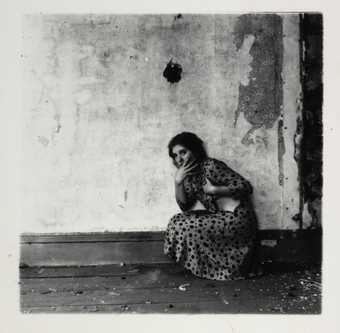
Francesca Woodman
Untitled, from Polka Dots Series, Providence, Rhode Island
(1976)
ARTIST ROOMS Tate and National Galleries of Scotland
© Woodman Family Foundation / Artist’s Rights Society (ARS), New York and DACS, London
Francesca Woodman’s family spent their summers at her parents’ farmhouse in the countryside near Florence in Italy and many of her photographs were taken there. European culture and art had a significant impact on her artistic development. The influence of surrealist art, particularly the photographs of Man Ray and Claude Cahun can be seen in the themes and style of her work. She developed her ideas and skills as a student at Rhode Island School of Design.
Francesca suffered from depression following a move to New York in 1979 and in 1981, after a failed relationship, she tragically took her own life at the age of twenty-two.
Importance and influence
Francesca Woodman photographed herself, often nude, in empty interiors. But her pictures are not traditional self-portraits. She is usually half hidden by objects or furniture or appears as a blur. The images convey an underlying sense of human fragility. This fragility is exaggerated by the fact that the photographs are printed on a very small scale – they seem personal and intimate.
Most of the photographs in the ARTIST ROOMS collection come from Francesca’s former boyfriend Benjamin P. Moore. She gave him the photographs, and many of them include intimate messages written in their margins. The messages become part of the artwork.
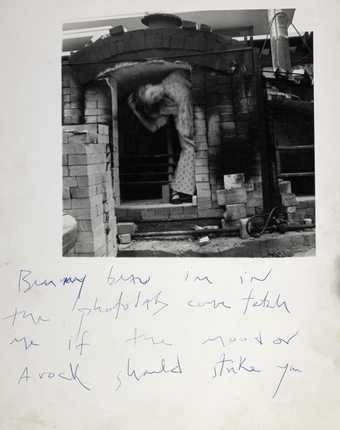
Francesca Woodman
Untitled, Providence, Rhode Island
(1975–8)
ARTIST ROOMS Tate and National Galleries of Scotland
© Woodman Family Foundation / Artist’s Rights Society (ARS), New York and DACS, London
Woodman continuously explored and tested what she could do with photography. She challenged the idea that the camera fixes time and space – something that had always been seen as one of the fundamentals of photography. She playfully manipulated light, movement and photographic effects, and used carefully selected props, vintage clothing and decaying interiors to add a mysterious gothic atmosphere to the work.
Her importance as an innovator is significant, particularly in the context of the 1970s when the status of photography was still regarded as less important than painting and sculpture. She led the way for later American artists who used photography to explore themes relating to identity such as Cindy Sherman and Nan Goldin.

Nan Goldin
Greer and Robert on the bed, NYC
(1982)
Tate
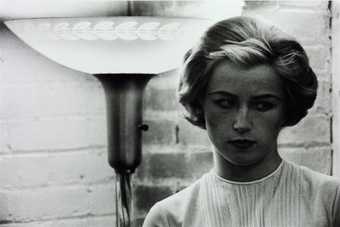
Cindy Sherman
Untitled Film Still #53
(1980, reprinted 1998)
Tate
Have a go: Lights, cameras, [abstr]action!
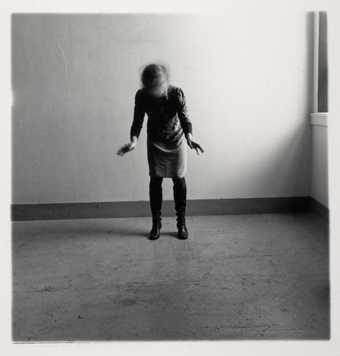
Francesca Woodman
Space², Providence, Rhode Island
(1976)
ARTIST ROOMS Tate and National Galleries of Scotland
© Woodman Family Foundation / Artist’s Rights Society (ARS), New York and DACS, London
You will need: A friend (to take the photographs – this activity is tricky by yourself); camera (not fully automatic) tripod, natural light, torch or electric lamp, (optional) coloured photographic gels (or coloured cellophane).
- Use as your setting a room or interior space that is not flooded with natural daylight such as a hallway or corridor - or shut your curtains to create a dimly lit space.
- Set up the camera with the flash turned off (the shutter speed of the camera will automatically slow down) and place it on a tripod. Alternatively, and if possible with your equipment, set the camera to a slow shutter speed but leave the flash on. This creates a freeze-frame effect where the camera will capture any movement as a blur.
- Use the torch or electric lamp or spotlight to light up an area of your space. If you have coloured gels then hold them up in front of the light source to create bold colourful casts of light.
- When the photographer tells you, move your body to create blurry shapes or shadows while they take the photograph. Try out different movements. For example if you keep your body still and just move your head then the end result will be a static body with the head as an abstracted blur.
Useful Tips: Remember, if the light source is behind you, you will be in silhouette. Alternatively, if the light source is shone directly on you then the light may bleach out any detail. Play with the light to see where it casts shadow.
Key Themes
Age and experience
Francesca Woodman’s entire body of work was produced as a young person and created over just eight short years. Her photographs explore many themes that affect young people such as relationships, sexuality, questions of self, body image, alienation, isolation and confusion or ambiguity about personal identity.
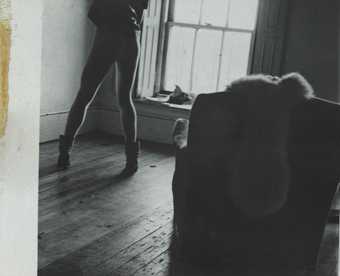
Francesca Woodman
Untitled, New York
(1979–80)
ARTIST ROOMS Tate and National Galleries of Scotland
© Woodman Family Foundation / Artist’s Rights Society (ARS), New York and DACS, London
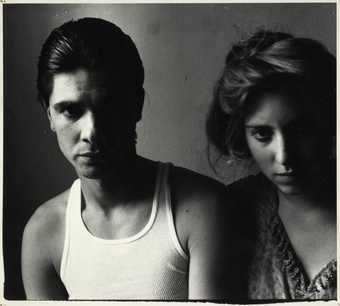
Francesca Woodman
Untitled, Rome, Italy
(1977–8)
ARTIST ROOMS Tate and National Galleries of Scotland
© Woodman Family Foundation / Artist’s Rights Society (ARS), New York and DACS, London
The 'die young' effect
Those who die young are always something of an enigma, leaving us with questions of what might have been had they lived. Suicide is a taboo subject but one that draws fascination, especially when the person is well known and talented. Just think of Ian Curtis, Kurt Cobain, Amy Winehouse or Sylvia Plath. Like them, Francesca died young, aged just twenty-two and left behind an exceptional legacy. Her images capture a life cut short which makes them sad and poignant today. Her ghostly presence in the photographs, whether blurred, partially hidden, obscured, camouflaged, fragmented or disguised is intense and powerful. It is sometimes disturbing and most of all, intimate.
Truth and Fiction
Most people are conscious of how they present themselves and how they would like others to see them. Francesca was no different. Although photographs are often seen as showing the truth, Francesca’s pictures are thoughtfully staged. She created an imagined reality through her use of locations, lighting, clothing, props and her own body.
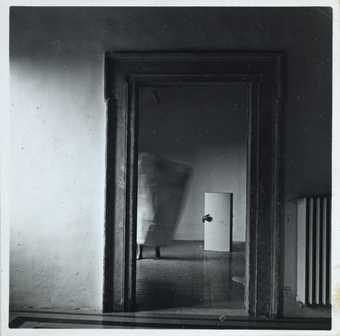
Francesca Woodman
Untitled, from Angel Series, Rome, Italy
(1977)
ARTIST ROOMS Tate and National Galleries of Scotland
© Woodman Family Foundation / Artist’s Rights Society (ARS), New York and DACS, London
Francesca plays with distorting reality into a surreal fantasy by squeezing herself behind mantelpieces or into small cupboards. She hides herself by creeping naked under a half upturned door, or pulling wallpaper over herself like a blanket. She often seems to be retreating into the material of the building. This makes her seem vulnerable, isolated and alienated.
What do you think? Image and Identity
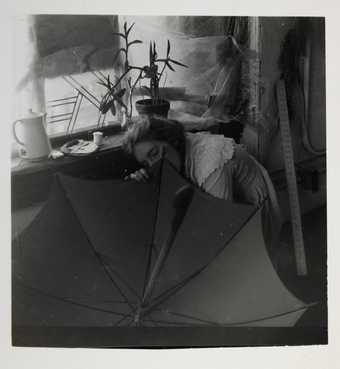
Francesca Woodman
Untitled
(c.1980)
ARTIST ROOMS Tate and National Galleries of Scotland
© Woodman Family Foundation / Artist’s Rights Society (ARS), New York and DACS, London
Woodman deliberately stages her photographs, often dressing up in vintage clothes. Is she creating a truthful image of herself?
- Think about who you are and how you want people to see you. If you have Facebook, Instagram or another social media profile, what do you choose to share?
- What would you share with one person? What would you share with a group? What would you share with everyone?
- What do you want people to know or think about you? Do others judge you by the profile you create?
- Do you edit details of your life online? Do you tell the truth?
Have a go: Visual profile collage
Create a collage to represent the profile you want to present to other people. You can choose to be truthful or present a fictional identity.
You will need: A digital camera; PC or laptop; a printer if you have one; paper, art materials; newspapers and magazines (fashion, music, media etc).
Use the materials to create the image of yourself that you would like other people to see.
To get some ideas, browse the slideshow above to explore a selection of portraits and self-portraits by other artists in Tate's collection.
Atmosphere
Woodman’s photographs are mostly very small in scale. This encourages us to look at them closely and deeply to work out what we are seeing and decipher their messages. When we find Francesca, she often appears naked or partially clothed, disguised or abstracted by photographic effects such as blurring caused by slow shutter speeds.
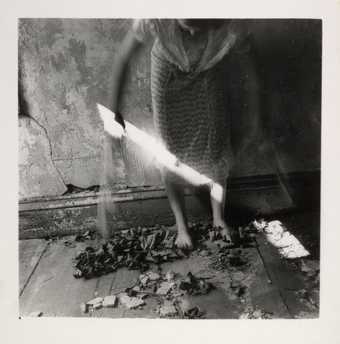
Francesca Woodman
Untitled, Providence, Rhode Island
(1975–8)
ARTIST ROOMS Tate and National Galleries of Scotland
© Woodman Family Foundation / Artist’s Rights Society (ARS), New York and DACS, London
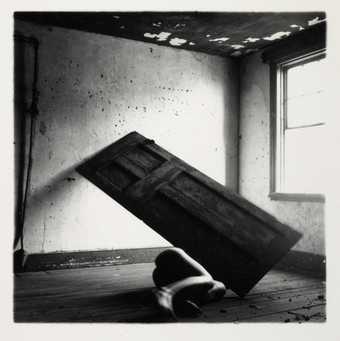
Francesca Woodman
Untitled, Providence, Rhode Island
(1976)
ARTIST ROOMS Tate and National Galleries of Scotland
© Woodman Family Foundation / Artist’s Rights Society (ARS), New York and DACS, London
Typically her photographs show disintegrating empty rooms, with cracked and broken masonry, dust, flaking paint or peeling wallpaper scattered with damaged fixtures and fittings. Props are often dark, gothic single items of furniture such as a chair, a mirror, a piano or a cabinet filled with stuffed animals.
The photographs have a cinematic quality that reminds us of films or music videos.
What do you think? Creating an atmosphere
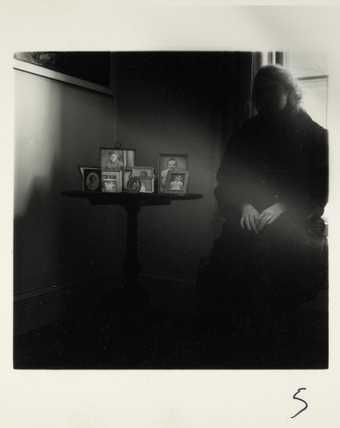
Francesca Woodman
Untitled, Concord, New Hampshire
(1977)
ARTIST ROOMS Tate and National Galleries of Scotland
© Woodman Family Foundation / Artist’s Rights Society (ARS), New York and DACS, London
How would you describe the atmosphere that Francesca Woodman creates in her photographs? Try and think of five words.
Describe the places she has chosen to take her photographs.
Though her images were produced in the 1970s when colour photography was available, the images are black and white and very small. Does this affect how you look at them?
Pick one photograph and think about how it makes you feel. It might help to write down your thoughts.
Have a go: Sound responses

Francesca Woodman
Space², Providence, Rhode Island
(1976)
ARTIST ROOMS Tate and National Galleries of Scotland
© Woodman Family Foundation / Artist’s Rights Society (ARS), New York and DACS, London
This activity is about sound.
You will need: Musical instruments if you have them; and/or objects and materials that make interesting sounds (these could be dried leaves, paper, foil, umbrellas etc); you can also use your voice to create sounds; sound recording equipment (your phone or a computer with a microphone).
Think about the atmosphere Woodman creates in her images. How do they make you feel?
- What kind of sounds would describe the atmosphere in the images?
- Where have the photographs been taken – what kind of sounds do you think there would have been in those locations? Can you see anything in the images that would make a sound and what would it sound like (for example this could be the rustling of leaves or the sound of a door)?
- Use the instruments and materials to make sounds that reflect your responses to the images. You don’t need to be able to play an instrument or create pieces of music. The sounds created can be abstract. Think about film soundtracks and soundscapes that create atmosphere. Record the sounds you make and listen to it as you look at Francesca Woodman’s photographs. Does the sound change your experience of looking at her work?
Timelessness
In many of her photographs Francesca wears vintage clothing that confuses our sense of time. She does not obviously belong to a particular era or place. Fashion has always had a fascination with the past. Elements of fashion from a particular era will make a come back – often in a thirty-year cycle. In the 1980s we were intrigued by the 1950s and fashion in the 2010s looks back nostalgically at the 1980s. Francesca’s photographs were taken in the 1970s yet she takes her inspiration back to the 1800s and 1900s, defying the usual cycle of fashion.
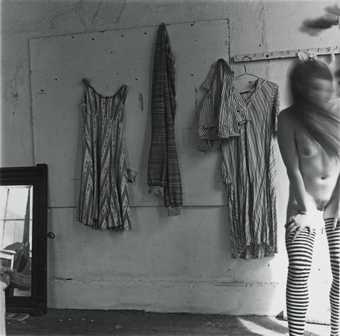
Francesca Woodman
Untitled, Providence, Rhode Island
(1975–8)
ARTIST ROOMS Tate and National Galleries of Scotland
© Woodman Family Foundation / Artist’s Rights Society (ARS), New York and DACS, London
Her prints are mostly atmospheric black and white, reminding us of films and photography from the 1920s. This was a deliberate choice as colour films were widely available when she took the photographs. Her use of black and white film, adds to the ambiguity of when the pictures date from, leaving Francesca forever trapped in a timeless world.
Have a go: Shadows of Francesca
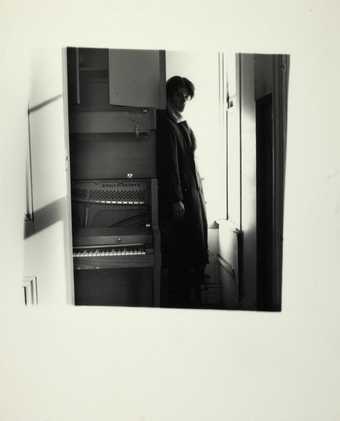
Francesca Woodman
Untitled
(c.1976–7)
ARTIST ROOMS Tate and National Galleries of Scotland
© Woodman Family Foundation / Artist’s Rights Society (ARS), New York and DACS, London
Taking inspiration from Francesca Woodman’s photographs, use pose, costume and an interior space to create a theatrical image of yourself. It might be easier and more fun to work with a friend or a group.
You will need: An interior space; a camera (with a timer function if you are working by yourself); tripod (if you have one); natural light, torch or electric lamp.
Props: Dressing up clothes; umbrellas or other accessories; single pieces of furniture i.e. a chair, a table etc.
- Look around your room to see where you can get the best use out of natural light. See where the shadows fall. If natural light is poor, use a powerful torch or lamp to manufacture your own light and shadow.
- Set the camera up on a tripod with the flash turned off. (If you have enough light then you may not need the tripod, experiment first and see if your pictures are in sharp focus – if they are not then make sure that you use the tripod).
- Dress up in character and set up a scene for your photographs. Think about what will be in the photograph in terms of props and background. Use Francesca’s photographs for inspiration.
- Remember everything in a photograph has a meaning. For example, if you are recreating a scene from a past time make sure you do not have a computer in the picture.
- Use body language and posture to give meaning. Try standing partially behind a door, crouching in a corner or curling up behind a piece of furniture.
- The atmosphere and meaning of a photograph can change depending on whether you make it colour, black and white, or sepia (antiqued). Use computer software or the camera itself to set the effects and colour options.

